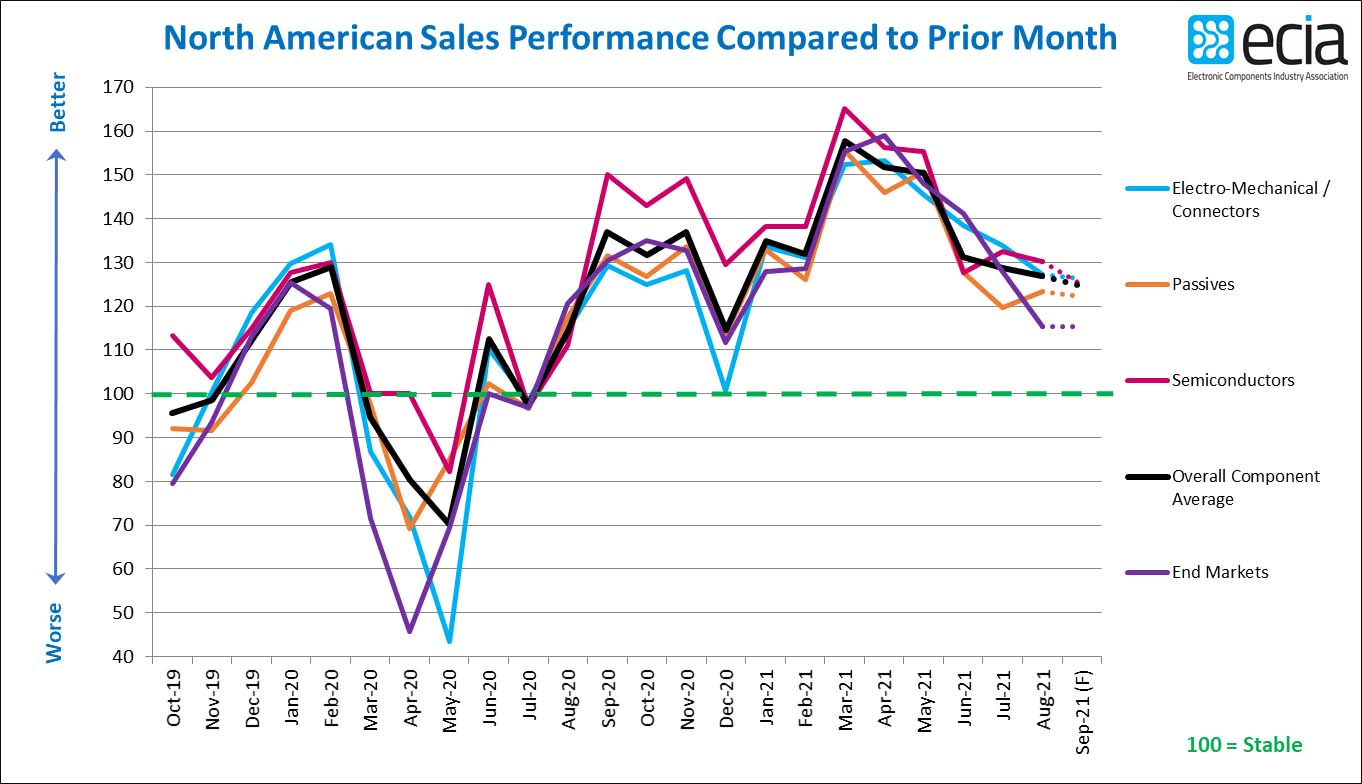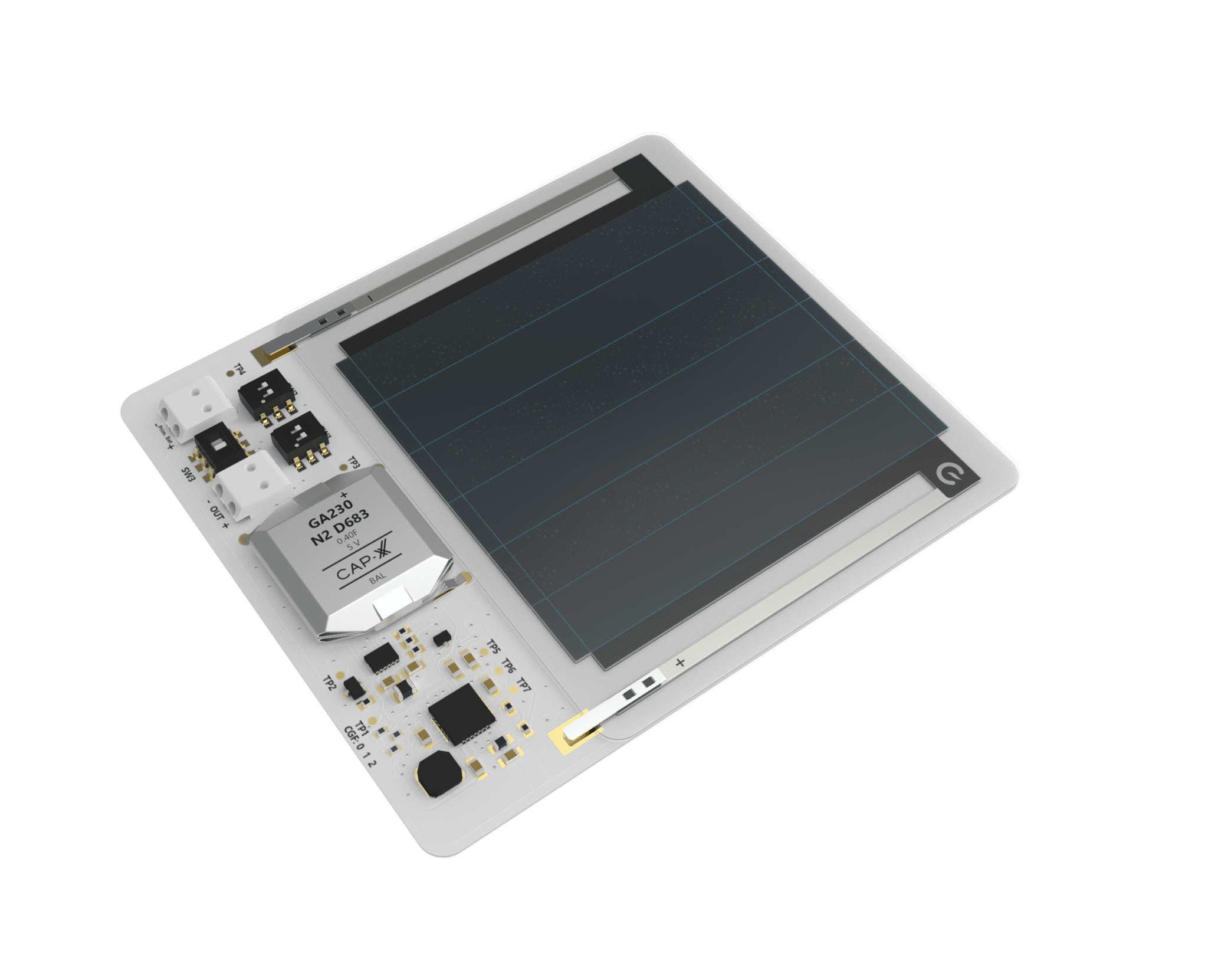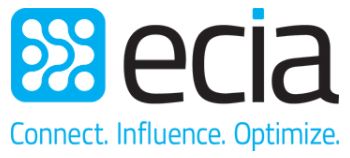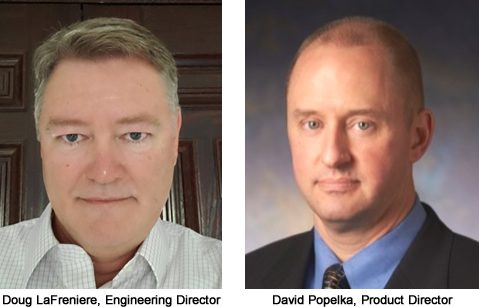September 2021 Electronic Connector Industry News
Industry events, awards, partnerships, personnel, facility, distribution, standards, association, and certification news from across the connector industry.
September 2021 Electronic Connector Industry News
Awards
 The International Society of Automation (ISA) recognized Jack Nehlig, president of Phoenix Contact USA, with its 2021 “Excellence in Leadership” award for his significant contributions to advancing automation. Nehlig was nominated for the award by Brad S. Carlberg, president of the ISA Richland Section in Richland, Washington. After Phoenix Contact donated PLCnext Technology software and hardware to Washington State University, his alma mater, Carlberg learned more about this open industrial automation platform. In his nomination, Carlberg praised Nehlig “for working with the Open Process Automation Forum (OPAF) and driving the development of an open PLC, providing high-performance interfaces to process I/O, and supporting virtually any software development environment and programming language, offering a concrete step on the road to open automation systems and the future of industrial automation.”
The International Society of Automation (ISA) recognized Jack Nehlig, president of Phoenix Contact USA, with its 2021 “Excellence in Leadership” award for his significant contributions to advancing automation. Nehlig was nominated for the award by Brad S. Carlberg, president of the ISA Richland Section in Richland, Washington. After Phoenix Contact donated PLCnext Technology software and hardware to Washington State University, his alma mater, Carlberg learned more about this open industrial automation platform. In his nomination, Carlberg praised Nehlig “for working with the Open Process Automation Forum (OPAF) and driving the development of an open PLC, providing high-performance interfaces to process I/O, and supporting virtually any software development environment and programming language, offering a concrete step on the road to open automation systems and the future of industrial automation.”
Partnership, Personnel, & Acquisitions News
 Smiths Interconnect announced a six-year contract to deliver a highly integrated multi-channel subsystem to support General Atomics Aeronautical Systems’ Lynx Multi-Mode Radar in ground and maritime missions. The Lynx radar pinpoints time-sensitive targets and produces high-resolution photographic imagery on a wide field-of-view coverage for manned and unmanned aircraft systems. Smiths Interconnect’s multi-channel transmit and receive subsystem combines radar system functions that were previously implemented in four separate subassemblies into a single plug-in subsystem, doubling previous capabilities. This subsystem increases mission performance by simplifying system integration, decreasing from 3.5 U to 1.5 U, and minimizing DC prime power usage. Designed to meet the challenges of harsh environments, the Smiths Interconnect subsystem solution minimizes size, weight, and power (SWAP) while delivering critical signal accuracy.
Smiths Interconnect announced a six-year contract to deliver a highly integrated multi-channel subsystem to support General Atomics Aeronautical Systems’ Lynx Multi-Mode Radar in ground and maritime missions. The Lynx radar pinpoints time-sensitive targets and produces high-resolution photographic imagery on a wide field-of-view coverage for manned and unmanned aircraft systems. Smiths Interconnect’s multi-channel transmit and receive subsystem combines radar system functions that were previously implemented in four separate subassemblies into a single plug-in subsystem, doubling previous capabilities. This subsystem increases mission performance by simplifying system integration, decreasing from 3.5 U to 1.5 U, and minimizing DC prime power usage. Designed to meet the challenges of harsh environments, the Smiths Interconnect subsystem solution minimizes size, weight, and power (SWAP) while delivering critical signal accuracy.
Technical Resources

A new study by Newark reveals that low-cost single board computers (SBCs) are now a valuable building block in all stages of new product development and production. Half of the professional engineers surveyed use SBCs for industrial and IoT. Raspberry Pi is the most popular board with 44% of professional users preferring it to other SBCs. Arduino was ranked second (28%), with Beagleboard in third place (6%). These SBCs simplify new product development and reduce time to market, allowing OEMs to quickly respond to market trends; 23% of respondents use SBCs for proof of concept and 35% for prototyping. The global survey ran from March to May 2021 and received nearly 1,500 responses from professional engineers, designers, and makers. Three fourths of the respondents (75%) were professional users and a quarter were hobbyists or makers (25%). Romain Soreau, head of single board computing at Newark, said, “The success of the Raspberry Pi and Arduino is driven by a powerful combination of high performance, versatility, features and accessories, low cost, and a large active user community, making these platforms very attractive to engineers looking to develop and deploy a broad range of applications quickly.” Customers can access the full range of SBCs by visiting Newark in North America, Farnell in EMEA, and element14 in APAC.
Smiths Interconnect is offering a new webinar, “Antennas for Enabling UAV Line-of-Sight C2 and Data.” Learn from Smiths Interconnect’s Engineering Director Doug LaFreniere and Product Director David Popelka as they share antenna challenges focused on operational requirements, enabling technologies, and product solutions. The webinar takes place October 20 at 11am PDT. Register here.
 The latest results from ECIA’s Electronic Component Sales Trend (ECST) surveys for August and Q3 2021 show a continuing but moderating cooling of sales expectations in September and through the end of 2021. Following the peak in the index for overall component average sentiment of 157.7 in March 2021, the index began a decline that saw a significant drop in June. However, the overall component index for July, August, and the September forecast has seen a moderating decline of month-to-month sales growth momentum. The average decline in the index in these months was only -2.2 points compared to a drop of -19.2 points in June. The assessment of overall end-market demand provides an encouraging sign as the index score remains stable between August and the outlook for September at 115.4. Again, it is important to remember that any score above 100 indicates growth expectations. However, the decline in the index shows an ongoing cooling in growth expectations continuing through September. The quarterly ECST survey results present a similar picture looking through the end of 2021. A comparison between growth expectations for Q3 2021 and Q4 2021 shows continued optimism for sales growth in both Q3 and Q4. The share of participants expecting growth in Q3 is 68% followed by continued optimism in Q4 but lower at 51% of participants. Only between 2% and 4% of participants expect a decline of between -1% and -3% in Q3 and Q4. The remaining survey participants expect stable revenues for the second half of 2021. This slightly longer-term outlook signals a continuation through the end of the year of the trends expected in September. The more modest growth picture for the remainder of 2021 should offer some relief to suppliers and supply chain managers as they have been challenged by demand that has outstripped supply in many areas and resulted in inventory shortages and significantly extended lead times. See the complete results here.
The latest results from ECIA’s Electronic Component Sales Trend (ECST) surveys for August and Q3 2021 show a continuing but moderating cooling of sales expectations in September and through the end of 2021. Following the peak in the index for overall component average sentiment of 157.7 in March 2021, the index began a decline that saw a significant drop in June. However, the overall component index for July, August, and the September forecast has seen a moderating decline of month-to-month sales growth momentum. The average decline in the index in these months was only -2.2 points compared to a drop of -19.2 points in June. The assessment of overall end-market demand provides an encouraging sign as the index score remains stable between August and the outlook for September at 115.4. Again, it is important to remember that any score above 100 indicates growth expectations. However, the decline in the index shows an ongoing cooling in growth expectations continuing through September. The quarterly ECST survey results present a similar picture looking through the end of 2021. A comparison between growth expectations for Q3 2021 and Q4 2021 shows continued optimism for sales growth in both Q3 and Q4. The share of participants expecting growth in Q3 is 68% followed by continued optimism in Q4 but lower at 51% of participants. Only between 2% and 4% of participants expect a decline of between -1% and -3% in Q3 and Q4. The remaining survey participants expect stable revenues for the second half of 2021. This slightly longer-term outlook signals a continuation through the end of the year of the trends expected in September. The more modest growth picture for the remainder of 2021 should offer some relief to suppliers and supply chain managers as they have been challenged by demand that has outstripped supply in many areas and resulted in inventory shortages and significantly extended lead times. See the complete results here.
Distribution
 Newark has signed a new franchise agreement with Epishine, an innovative Swedish manufacturer of printed organic solar cells and development kits. The company’s organic solar cells are small, thin, flexible, and printed on recyclable plastic. The cells can be easily integrated into any low power electronic equipment where they convert ambient indoor light into electricity. New product designers can replace batteries in wireless sensors and similar devices with the organic solar cells, reducing the environmental impact of battery waste and saving battery replacement costs. Epishine’s Light Energy Harvesting Evaluation Kit combines a six-cell 50x50mm LEH module with a supercapacitor which acts as an energy buffer and intelligent charging management system to support various output voltages and energy storage solutions. It can even use an external primary battery as a backup. The evaluation kit can deliver sufficient output current to power wireless devices such as BLE, Zigbee, and LoRa. The ability to program the evaluation kit provides added flexibility. Epishine’s organic solar cells will be added to Newark’s line card later this year.
Newark has signed a new franchise agreement with Epishine, an innovative Swedish manufacturer of printed organic solar cells and development kits. The company’s organic solar cells are small, thin, flexible, and printed on recyclable plastic. The cells can be easily integrated into any low power electronic equipment where they convert ambient indoor light into electricity. New product designers can replace batteries in wireless sensors and similar devices with the organic solar cells, reducing the environmental impact of battery waste and saving battery replacement costs. Epishine’s Light Energy Harvesting Evaluation Kit combines a six-cell 50x50mm LEH module with a supercapacitor which acts as an energy buffer and intelligent charging management system to support various output voltages and energy storage solutions. It can even use an external primary battery as a backup. The evaluation kit can deliver sufficient output current to power wireless devices such as BLE, Zigbee, and LoRa. The ability to program the evaluation kit provides added flexibility. Epishine’s organic solar cells will be added to Newark’s line card later this year.
 TTI Inc. expanded its product offering in Brazil and South America by adding TE Connectivity products in its São Paulo warehouse, beginning August 2021. “We want to offer our in-country customers the convenience of buying locally the same products they can select in our line card, where TE Connectivity plays a pivotal role,” said Samuel Felicio, country manager.
TTI Inc. expanded its product offering in Brazil and South America by adding TE Connectivity products in its São Paulo warehouse, beginning August 2021. “We want to offer our in-country customers the convenience of buying locally the same products they can select in our line card, where TE Connectivity plays a pivotal role,” said Samuel Felicio, country manager.
Associations, Standards, & Certifications
In the U.S., the Office of Chemical Safety and Pollution Prevention of the Environmental Protection Agency (EPA) has determined that the chemical phenol, isopropylated, phosphate (3:1) (PIP 3:1) poses a risk to the public and has banned the use of the chemical. The ban was scheduled to go into effect on March 8, 2021, under the Toxic Substances Control Act (TSCA). On September 3, according to the National Law Review, the EPA announced it is extending certain compliance dates for PIP (3:1) to March 8, 2022, “to address the hardships inadvertently created by the original applicable compliance dates in the January 2021 final rule to ensure that supply chains are not disrupted for key consumer and commercial goods.” The EPA will also issue a notice of proposed rulemaking that, if issued in final, would further extend the compliance dates. EPA also requested additional comment on the final PIP (3:1) rule, noting that “industry commenters indicated the need for varying time frames to remove PIP (3:1) from their supply chains, and many did not provide sufficiently specific information about their operations to support their assertions.” For more information, visit PIP (3:1) (ecianow.org).
 The E.U.’s SCIP database directive went into effect in January of this year. Companies around the world, including those in the U.S., are now impacted by this new regulatory requirement to submit data to the “Substances of Concern In articles, as such or in complex objects (Products) (SCIP)” database. While mandatory for those in the European Union (EU), U.S. companies are facing data requests from their European customers so that they can meet their SCIP obligations. One of the goals of the SCIP database requirement is to get much closer to achieving a circular economy. The directive aims at reducing waste and protecting the environment from poisonous materials by compiling data about hazardous materials in products that are entering the waste stream. The database helps waste stream managers identify harmful chemicals in products. ECIA has posted a recording of a webinar on this topic by Assent Compliance to provide critical details on what companies throughout the electronic components supply chain need to know.
The E.U.’s SCIP database directive went into effect in January of this year. Companies around the world, including those in the U.S., are now impacted by this new regulatory requirement to submit data to the “Substances of Concern In articles, as such or in complex objects (Products) (SCIP)” database. While mandatory for those in the European Union (EU), U.S. companies are facing data requests from their European customers so that they can meet their SCIP obligations. One of the goals of the SCIP database requirement is to get much closer to achieving a circular economy. The directive aims at reducing waste and protecting the environment from poisonous materials by compiling data about hazardous materials in products that are entering the waste stream. The database helps waste stream managers identify harmful chemicals in products. ECIA has posted a recording of a webinar on this topic by Assent Compliance to provide critical details on what companies throughout the electronic components supply chain need to know.
Like this article? Check out our other Product Roundup, Product News, and Connector Industry News features and our 2021 Article Archives.
Subscribe to our weekly e-newsletters, follow us on LinkedIn, Twitter, and Facebook, and check out our eBook archives for more applicable, expert-informed connectivity content.
- Sealing Success: Overmolding for More Secure Connections - April 23, 2024
- Medical Cable Assemblies Product Roundup - April 23, 2024
- Mezzanine Connectors Product Roundup - April 16, 2024








